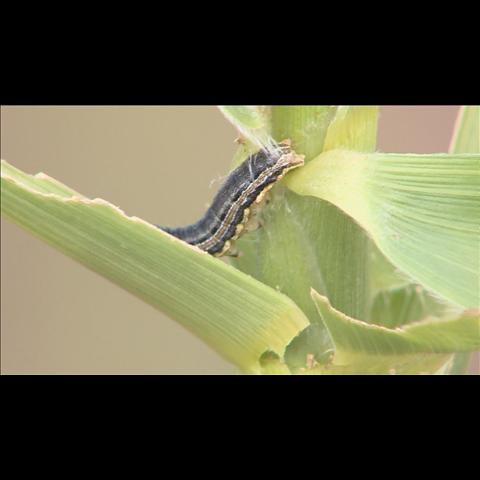AVON, Minn. - It's the time of year when deer are known to hide out in Glen Ritter's cornfield. Not anymore. Corn that was standing six feet tall as recently as last week is now barely six inches high in places, mowed off by an invasion of army worms.
"We first noticed it last week on Friday," says Ritter. "It's kind of shocking."
20 acres of Ritter's corn crop had been reduced to twigs before he was able to hire a local co-op to apply insecticide to all his fields.
"Nobody's ever really seen it this bad," he said. "Everybody's reaction is pretty much shock."
Though scattered, damage is being reported across a swath of central Minnesota. "We hear pretty common reports all the way from eastern South Dakota all the way into Wright County," said Dan Martens, a University of Minnesota Extension educator who works with famers in Ritter's area.
Martens says farmers would be wise to check their cornfields ever few days. The worms are voracious eaters and can strip a field in a matter of days. Insecticides are effective, but only if farmers catch the worms early.
Army worms will not survive Minnesota's winters. They arrive as moths, carried in with winds blowing in from the south and southeast. Martens says their eggs survive best during cool springs, like the one Minnesota just experienced.
Alfalfa and corn are the main sources of feed for Ritter's 70 milk cows. He says it's too soon to know if his hay and the 180 acres of corn he has left will get him through the winter. "You just gotta wait and see what happens," he said.
His insurance agent arrived at the farm this morning to inspect the damage.
You've heard of a field of dreams. Ritter's looks like a nightmare.


